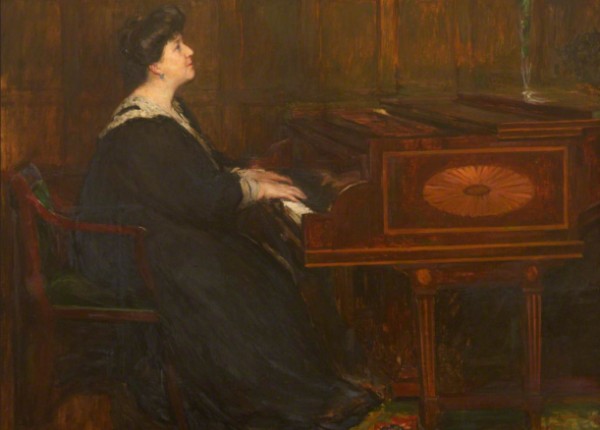#PracticeMakesPerfect
One would think that the more you practice, the better. How often has someone told us to go practice?
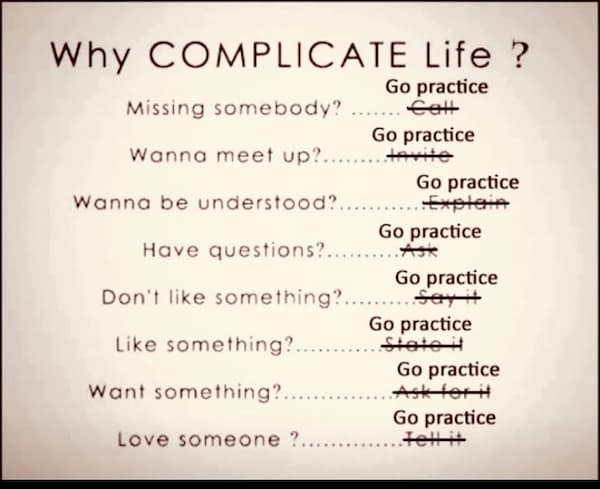
Go Practice!
But, know that time spent should not be the only consideration. It’s essential that we take note of how and how much we are taxing our bodies. Injury risk is not necessarily lower when we practice at home, in control of what we do, what we play, and how we play it. Musicians tend to lose track of time when they become emotionally involved. Sometimes we will push ourselves into mindless repetition, or we start cramming to “get through” a lot of repertoires. We might get “stuck” on one difficult passage that we are determined to master no matter what. As a result, we stay put in our chairs for much too long while straining a particular group of muscles.
This increases the tension in our bodies and puts us at risk. The following 10 lifelong practice habits will help prevent injuries.
Ten Essential Practice Rules
1. Warm Up. Muscle speed, efficiency and strength are enhanced by a rise in the temperature of the muscle. Cold muscles are inelastic and will not respond well. It’s important to start by gently and smoothly using our muscles to increase the blood flow through them.
A) Start away from the instrument with an aerobic activity. It can be a five-minute brisk walk, running up the stairs, or jumping in place. Then gradually move your upper torso, for example, by shrugging and rolling your shoulders and wrists, reaching up to the ceiling, and clasping hands behind you.
B) Then warm up at the instrument. Be mindful of how you start to play and begin in the mid-range of your instrument. Start gently, gradually increasing the intensity. I like to start with long slow shifts. Strenuous techniques such as fast passage work or octaves, (such as in this Paganini Caprice) should be avoided:
Niccolo Paganini: 24 Caprices, Op. 1 – No. 3 in E Minor – Sostenuto – Presto (Leonidas Kavakos, violin)
Steer clear of high-range exercises, fast scales or arpeggios, and technique-building studies at first, like these works:
Frédéric Chopin: Etude No. 1 in C Major, Op. 10, No. 1 (Abbey Simon, piano)
Alfredo Piatti: 12 Caprices, Op. 25 – No. 1 Allegro quasi presto (Antonio Meneses, cello)
Finally, avoid unnatural positions such as double stops, stretches, leaps, or reaches. Keep this in mind when you first sit down to practice:
NOT TOO HIGH, NOT TOO LOW; NOT TOO FAST, NOT TOO SLOW.
2. Take Breaks. Set a timer and take a 10-minute break per hour of playing. It’s also very helpful during practice time to take mini breaks. Lower your arms and allow them to hang for a moment in between phrases, take a deep breath or two. Think of releasing often.
3. Sit or stand with good posture. Choose a chair that allows your knees to descend from your hips with your weight forward and on your feet to maintain the natural lumbar curve in your lower back. Alternate sitting and standing if your instrument allows you to do that. While sitting or standing keep your torso facing forward, with your shoulders down and your head upright and in neutral. Keep in mind that for every inch your head moves forward, the force stressing your head and spine is increased by 10 pounds. Make sure your upper body is not tilting, twisting, leaning or slumping.
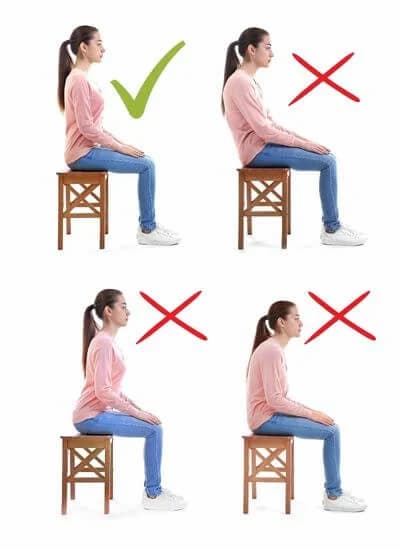
Sitting posture examples
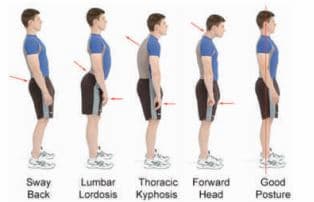
Standing posture examples
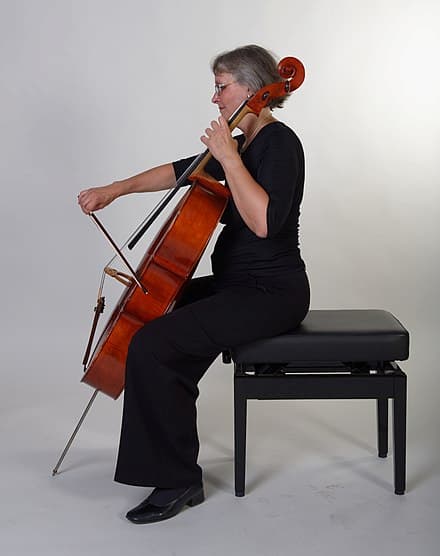
Sitting posture with the cello

How heavy is your head?
4. Move, wiggle, and stretch. Take a moment whenever there is a bar rest to roll shoulders and wrists, to look over your left then right shoulder, to wiggle and to adjust your sitting. These can be done unobtrusively, even onstage during a performance.
5. Vary your repertoire. It’s easy to get stuck on one passage that you’re determined to master. This can cause an injury. Set a time limit and come back to that passage if needed later in the day. Playing different pieces will prevent taxing a particular part of your body.
6. Increase your practice load gradually. If, for example, you practice intermittently at home, say 1 hour every other day, and then attend a festival where you play several hours a day, you’ll run the risk of injury. If you’ve taken time off or if you’ll be playing an intense schedule, start well ahead of time gradually building stamina.
7. Reduce your practice intensity prior to performance. Avoid heavy practice on the day before and on the day of a concert or audition. Instead, concentrate on visualising the music, playing with ease, and thinking positive thoughts.
8. Practice away from your instrument. This is so important. Your brain is remarkable and often can learn just as well away from physically doing the playing! Study the music visually. Sing it aloud or in your head the way you imagine you’d like to play it. This is effective for memorisation too. Picture effortlessness in your mind’s eye.
9. Never ignore pain. Your body is trying to tell you something. Other danger signals can be more subtle and include fatigue, weakness, numbness or tingling, impaired dexterity, and difficulty with normal daily activities. Stop and try to figure out when these symptoms began and what might have triggered it. Never self-diagnose. Seek professional medical help.
10. Take a day off. Make certain to implement some stress-reducing activities, to get some exercise, and to refuel, especially when you are under duress, overtired or stressed.
How you practice is more important than time spent. Patience is the key! In the next article 10 Practice Hacks That Will Transform Your Playing in 2025, we’ll study several strategies for successful practising.
For more of the best in classical music, sign up for our E-Newsletter


